“Confusion in her eyes that says it all, she’s lost control.”
The opening line of She’s Lost Control by Joy Division often came to mind when watching Jürgen Klopp watching his Liverpool side in 2022/23. The Reds’ manager was at times stood on the touchline, a bewildered expression plastered across his face as he failed to understand what his players were doing.
Take the 3-0 loss at the Amex in January. “Brighton were the better team, it was well deserved,” Klopp said afterwards. “They played really well. It was a very organised team against a not very organised team.”
There’s only one outcome for the latter side in that scenario, a lack of control. Liverpool’s issues in this area can be visualised using data from Opta. Their Analyst site carries pitch maps for zones of control, which involves dividing the field into 30 sections and determining the percentage of the total touches a team had in each segment.
If they had more than 55 per cent then they are deemed to have control and the zone is marked in light blue. If the opposition dominates to that extent then the segments are marked red, with anything between classed as contested and shaded grey. Here is Liverpool’s chart for 2021/22.
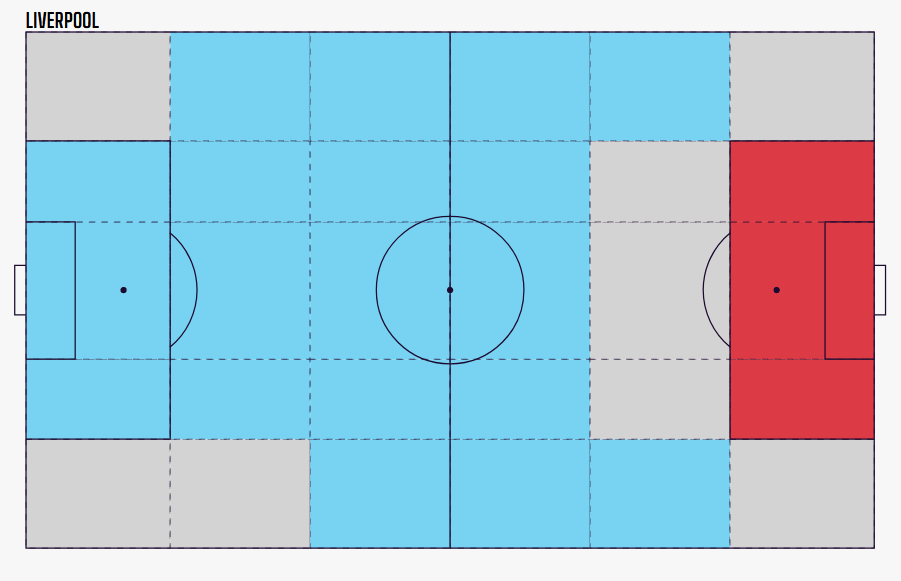
Liverpool dominated what you might think of as the midfield (the central three sections either side of half way), contested the three regions directly in front of the box – with an average of 49 per cent of the touches there – and were outdone in the opposition penalty area, same as every side was.
In the early weeks of this season, the figures were similar. After game six (the goalless draw at Goodison Park), the Reds had averaged 78 per cent of the touches in the middle six zones and 51 per cent in Zone 14 and the half spaces (to use the technical parlance so beloved by corners of Twitter).
But then they were taught the first of several lessons by Brighton this term and the figures began to dwindle. They kept falling and falling until the end of the 2022/23 league campaign the chart looked like this:
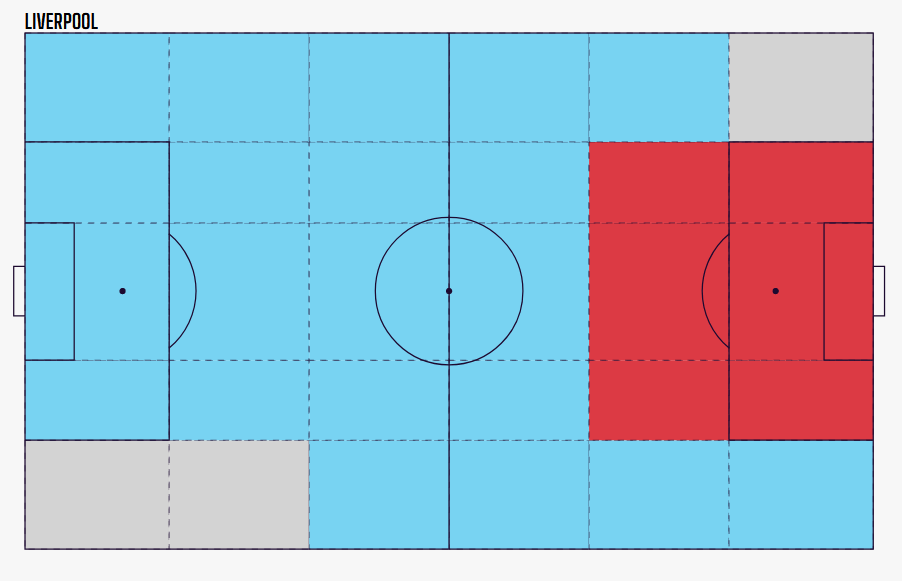
The region in front of the opposition box had been swallowed up by red while the average for the midfield six segments had dropped by five per cent on the season before. While only Arsenal, Brighton and (yawn, inevitably) Manchester City also controlled the midfield, the drop Liverpool experienced spoke volumes for their problems.
The beacon of hope is that things had been worse earlier in the campaign. The low point occurred after the 2-2 draw with Arsenal, at which point Liverpool had taken 62 per cent of the touches in what we’re calling midfield and 36 per cent in front of the box.
That match was the second of the 11 game unbeaten run which the Reds would compile to close out their campaign. It was also the first for the new tactical process whereby Trent Alexander-Arnold moved into midfield when Liverpool had possession, forming a duo with Fabinho in a 3-2-5 framework.
It had the desired effect of getting the most creative player involved more frequently. Just as important was that it improved the team’s control; here’s how much the figures changed from before the new system was introduced and the end of the season.
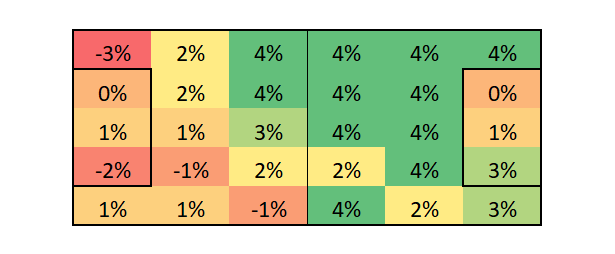
Bear in mind too that to shift an average established over 28 matches in the space of 10 requires a sizeable uplift of greater than a few percentage points. Here’s what Liverpool posted from the home game with the Gunners to the end of the campaign.
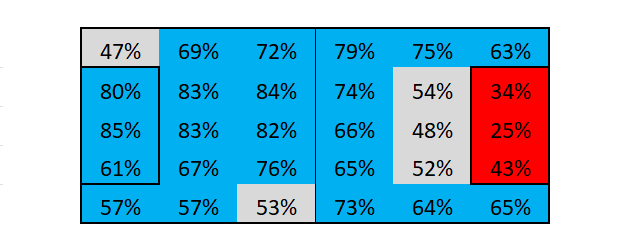
They dominated the midfield to a greater extent than they did in 2021/22 (when they posted 92 points, lest we forget), and while they didn’t match that season for the trio of segments in front of the box, they at least made it a contested zone again.
They nearly did the same for the right side of the opposition penalty area which would have been rarefied air indeed. A look at Mohamed Salah’s heatmaps (via Fantasy Football Scout) for the first 28 matches and the final 10 shows how he was far more focussed in that region, with less activity to the side of the box and directly in front of it.
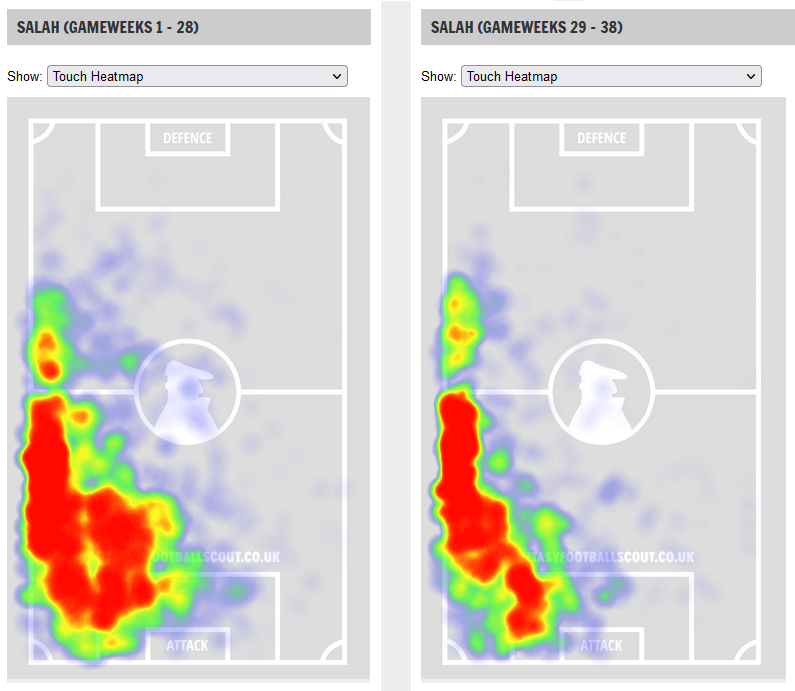
Salah’s total of 12 goal contributions in this period made it the strongest 10-game spell he had in all competitions this season. Even if you disregard penalties, he still reached double figures.
By the time you read this, Liverpool might have made a significant transfer move to address their issue in Zone 14 too. Alexis Mac Allister was the Premier League’s leading player for both making and receiving passes in that area last season. While he may be tasked with a different role than he had at Brighton, the World Cup winner has at least demonstrated his prowess in a problem area for the Reds.
Alexis Mac Allister in zone 14 in the Premier League this season:
181 passes played from zone 14 (#1 in league)
141 passes received in zone 14 (#1 in league) pic.twitter.com/2erg9z7Ann
— Ben Griffis (@BeGriffis) June 5, 2023
With Alexander-Arnold tightening up the midfield, Mac Allister pulling strings from just outside the box and Salah more heavily involved inside it, the 2023/24 version of Liverpool has the potential to be a mouth-watering proposition.
Control will be regained and Klopp’s confused countenance should be consigned to history.




